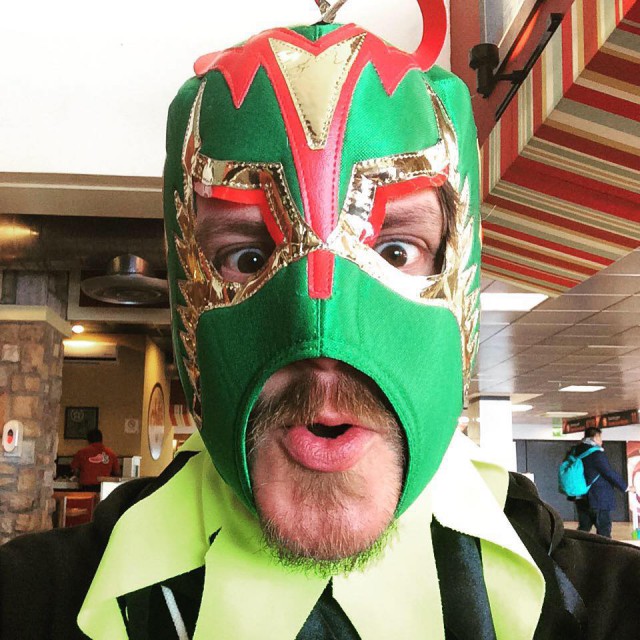All That They Can See
Don’t mistake San Francisco (by way of Davis) trio Sholi for a wholly identifiable musical collective. Their creative influences weave through minimalist shoegaze, Qawwali and the drone-y spiral of standing on a precipice, not knowing whether or not it’s time to leap. Their self-titled debut full-length, produced by Greg Saunier of Deerhoof, is an endurance test of the best kind; a sort of hopscotch through sidewalk chalk squares, hopping backwards with no knowledge of where the stone lies—guess wrong about a particular movement and you’ll trip and lose. Only according to vocalist/guitarist Payam Bavafa, Sholi isn’t interested in elaborating on the brainier elements of his band; but just hopes that listeners will create or find their own spaces with which to understand the band’s sound.
Established fans and newcomers will get their respective chances, as the band will celebrate the release of their debut on Feb. 14 at Delta of Venus in Davis. The album will be released nationally via Touch and Go/Quarterstick Records on Feb. 17, just two weeks before the band hits the music conference circuit with Noise Pop and SXSW. With so much going on, it’s a wonder Bavafa even had the time to carve out an interview with Submerge. He almost didn’t; but as with the stunning collection of angular neuro-rock his band has put out thus far, it’s definitely better to wait it out.
Sholi is a relatively new band, and you relocated during its formative months. How did the distance affect the band in the beginning?
Jon [Bafus, drums] and I started Sholi in Davis, and then I moved out to San Francisco for work. With the distance, things took a little longer to develop, but it was nice to be able to explore some ideas on our own before collaborating.
I’ve read that your relocation to San Francisco landed you a job as an electrical engineer for a sort of mad scientist. Can you explain what type of work you did, and how/if that work found its way into lyrical themes of your music?
I worked for a neuroscience research company. Most of the work we did had to do with capturing and analyzing EEG—brain waves. We studied sleep and memory among other things. I guess just working in this environment all day inspired some lyrical and musical ideas that explored the line between nostalgia and the “science” of how we actually process memories.
What kinds of theories of memory and the inner-workings of the mind interest you the most or are the most fascinating to you?
There’s a book by Pentti Kanerva called Sparse Distributed Memory that my research director gave me. It explores how memories are physically activated by means of association and attempts to construct a computational model of this idea. Pretty interesting stuff if you’re into technical reading.
Your 7-inch released on Holocene Music included a reinterpretation of Iranian ’70s pop musician Googoosh, as well as a cover of Joanna Newsom’s “The Sprout and the Bean.” Is displacement a central theme of your work as well? In what ways do you hope to invoke messages or insight to the plights of not only Iranians, but of all displaced peoples of the world?”¯
The Hejrat 7-inch was a separate project. I don’t know if our music attempts to do that necessarily, but it could be said that displacement is a theme explored in our music to some degree. Not so much in a “cultural” sense, as with Hejrat, but in notions pertaining to the development of one’s identity or a shift in one’s perspective.
Your new album will be released in just over a week, having been produced by Deerhoof’s Greg Saunier. What was it like working with him as a producer? What sorts of suggestions did he give you in terms of arrangements stemming from those initial production notes from your demos? Was it difficult to sometimes submit to ideas you didn’t come up with on your own?
Working with Greg was amazing. Production began while he was on tour in Europe. He sent us notes via e-mail about the demos he was listening to on his iPod. A lot of his feedback focused on concision, which is funny because we ended up with some pretty long songs. He helped us highlight certain elements of the music, balancing expressiveness of instruments and vocals, which is something that I think Deerhoof does very well. We wanted a producer who would be able to mold Jon’s intricate, complex drumming style with these melodic songs without making them sound too dense or overwhelming. Greg was very helpful in that regard. There were occasional creative differences, but in general, he would leave us with a bunch of suggestions, let us work on the songs ourselves for a while, and then come back to help finalize things.
Your music contains a lot of different movements in energy, it seems; are these movements intended to thrust the songs’ lyrical arcs through to the listener in a more cerebral way, or is being a sort of progressive indie rock trio kind of something you’re just drawn to musically? How might the rest of the band respond to that question?
We definitely put our own thought into structures and themes, etc., but none of them are intended to engage the listener in a more cerebral way, necessarily. If anything, I think we’d be happiest if people could listen to the album in a variety of environments and find whatever way they can to enjoy it.


Comments